Chief Oshawana (John Naudee) 1858
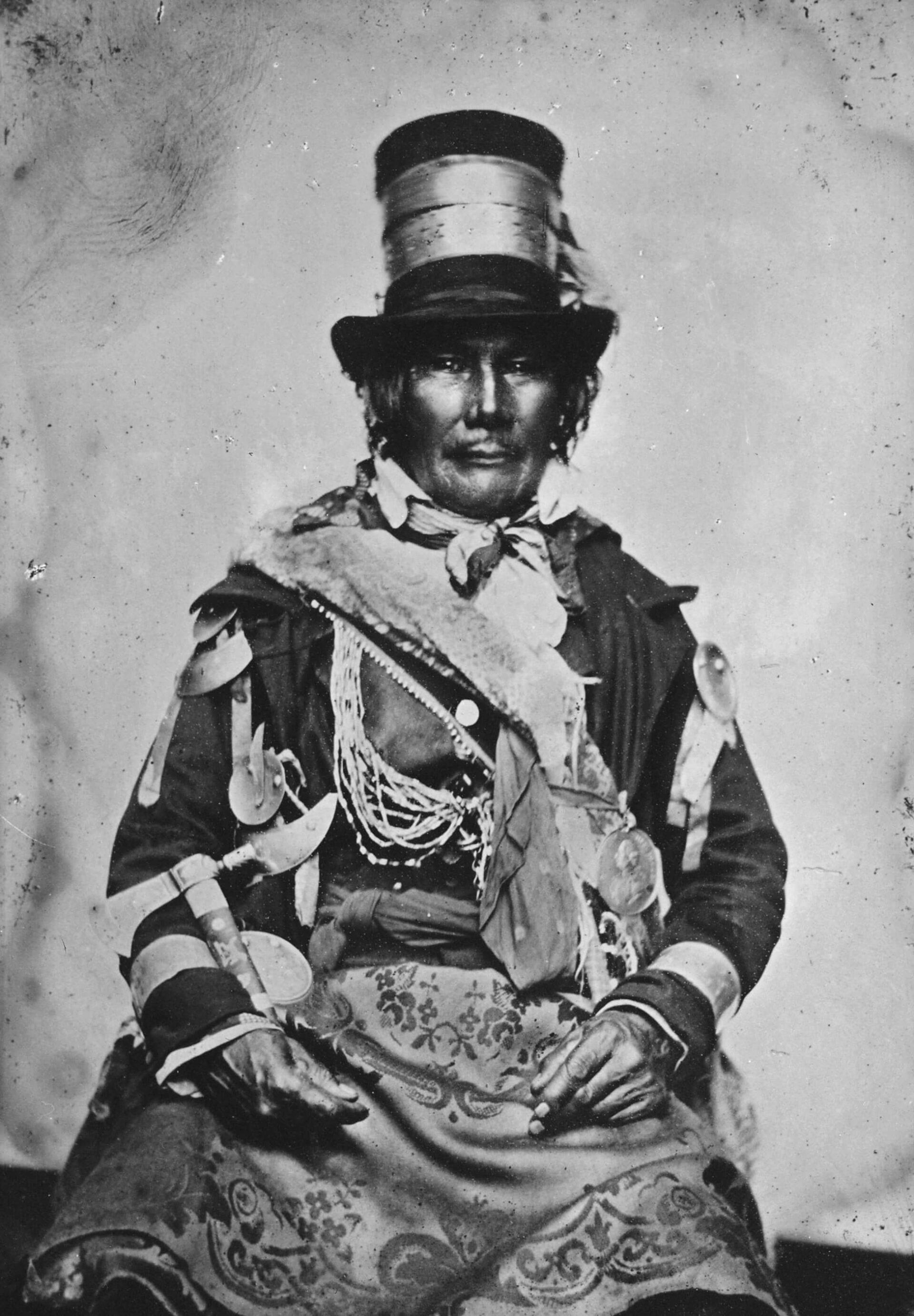
Anonymous, Chief Oshawana (John Naudee), 1858
Photograph, 11.9 x 19 cm
Library and Archives Canada, Ottawa
This widely replicated photograph shows Chief Oshawana of the Chippewa in old age. During the War of 1812, 1812–15, he had been Tecumseh’s key warrior at the 1813 Battle of the River Thames. The British and their Indigenous allies lost the battle, and Tecumseh was killed. Here, Oshawana wears a hybrid costume: strings of wampum and a pipe tomahawk reflect his Indigenous heritage, but his suit and top hat are British, as is his King George III medal.
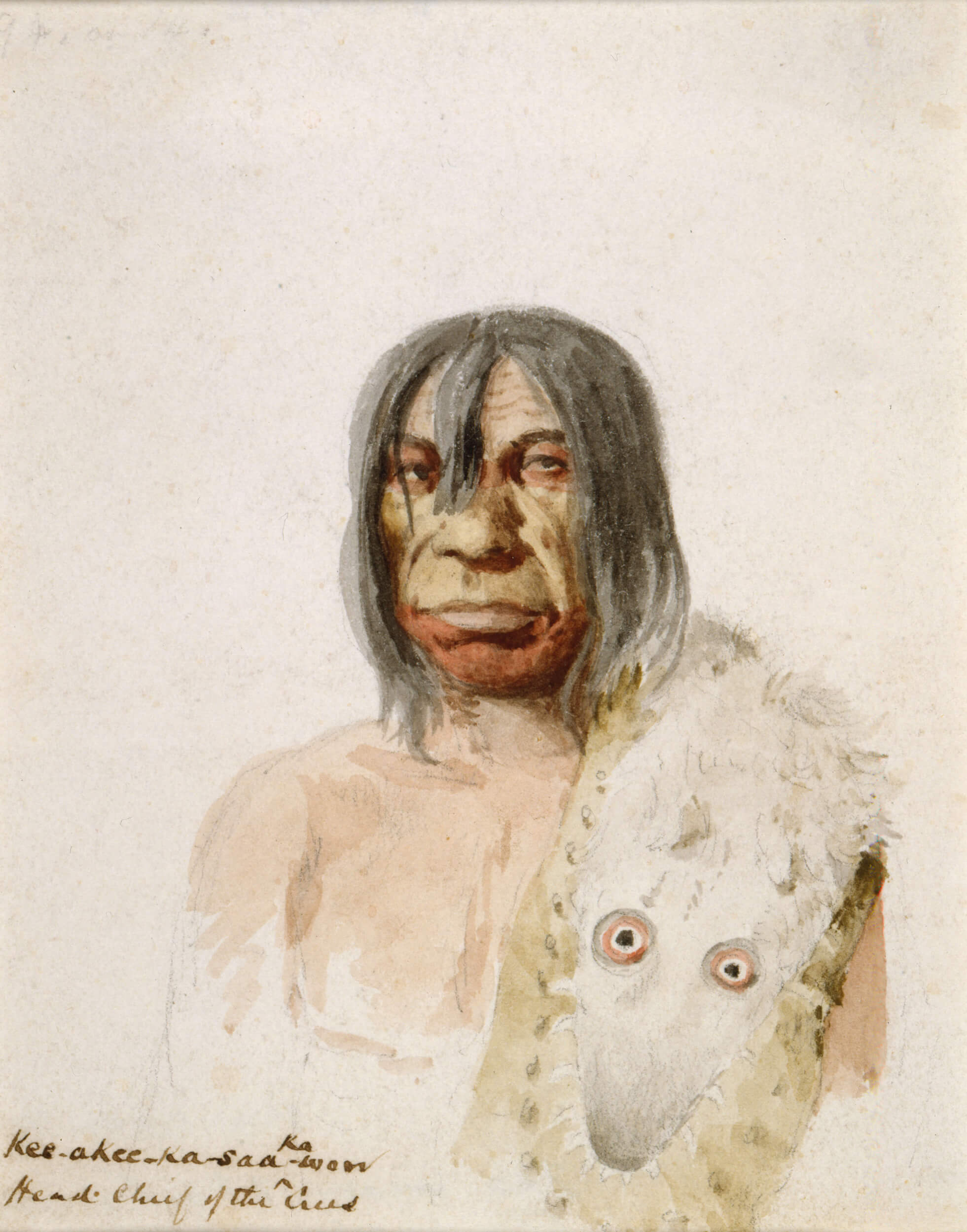
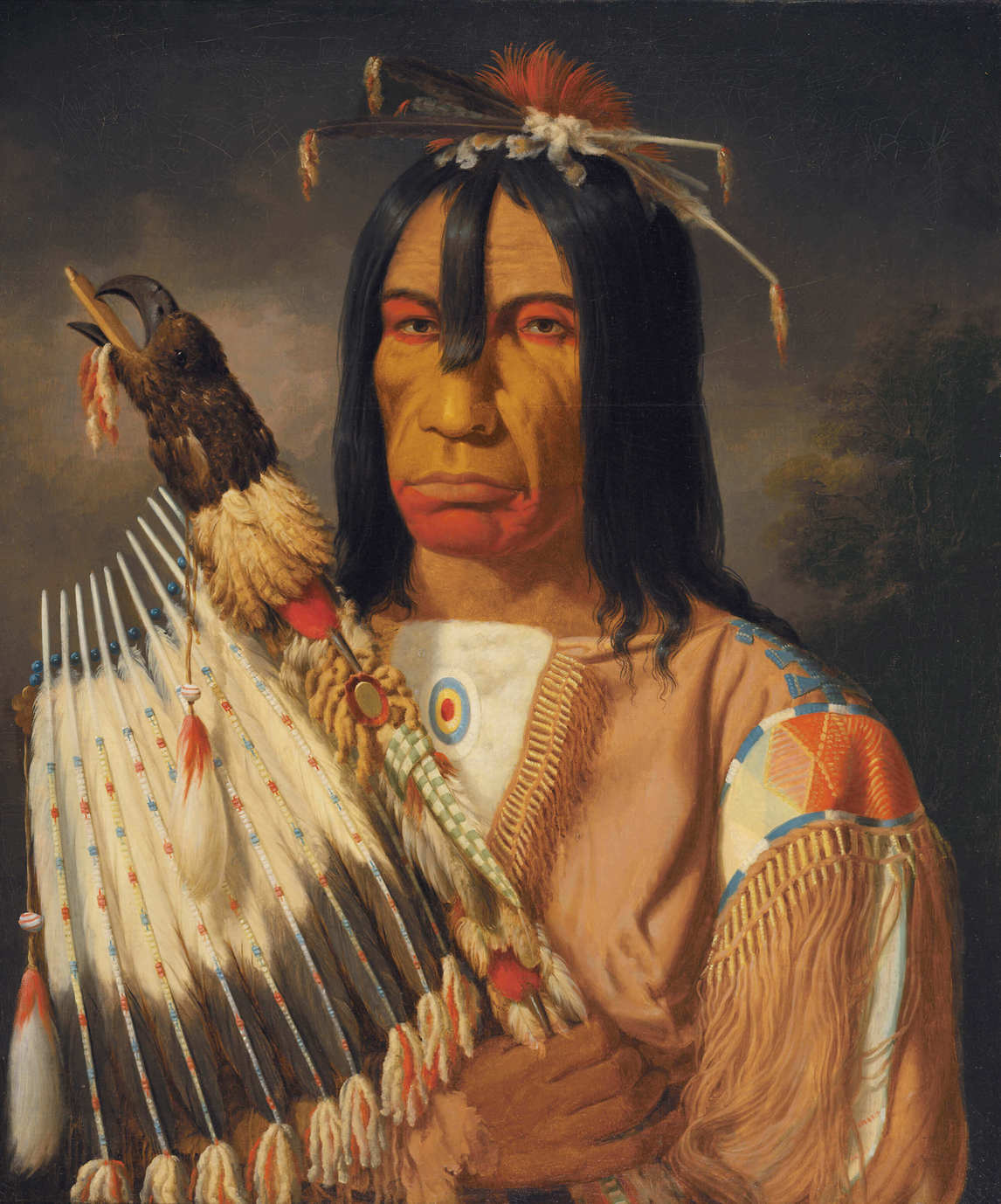
Ceremonial pipe tomahawks such as the one Oshawana holds in the photograph could be items of great beauty. They were traditionally of European manufacture and were presented to Indigenous chiefs to signify peace. Both the tomahawk and the pipe are also associated with dance in Chippewa culture.
Regardless of symbolism, however, images such as Chief Oshawana, with their focus on what to Western eyes were exotic clothing and practices, also helped to shape European attitudes to Indigenous peoples as the “other.” Europeans generally preferred to imagine Indigenous peoples in Canada as untainted by any European influence, and this often shaped their approach to image-making. For instance, the painting by Paul Kane (1810–1871) of Chief Keeakeekasaakawow (“The man that gives the war whoop, Head Chief of the Crees”) likely elevates the subject in rank and mistakenly identifies him as Cree rather than Saulteaux. One similarly dated watercolour sketch of this same man shows a more realistic figure.

 About the Author
About the Author
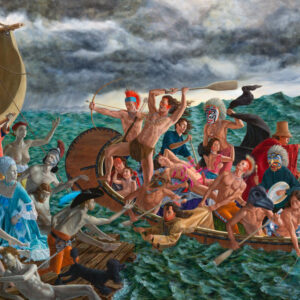 More Online Art Books
More Online Art Books
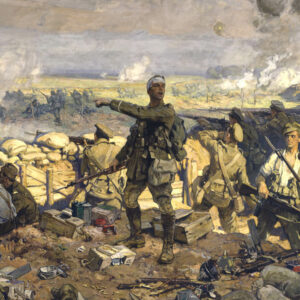 Acknowledgements
Acknowledgements